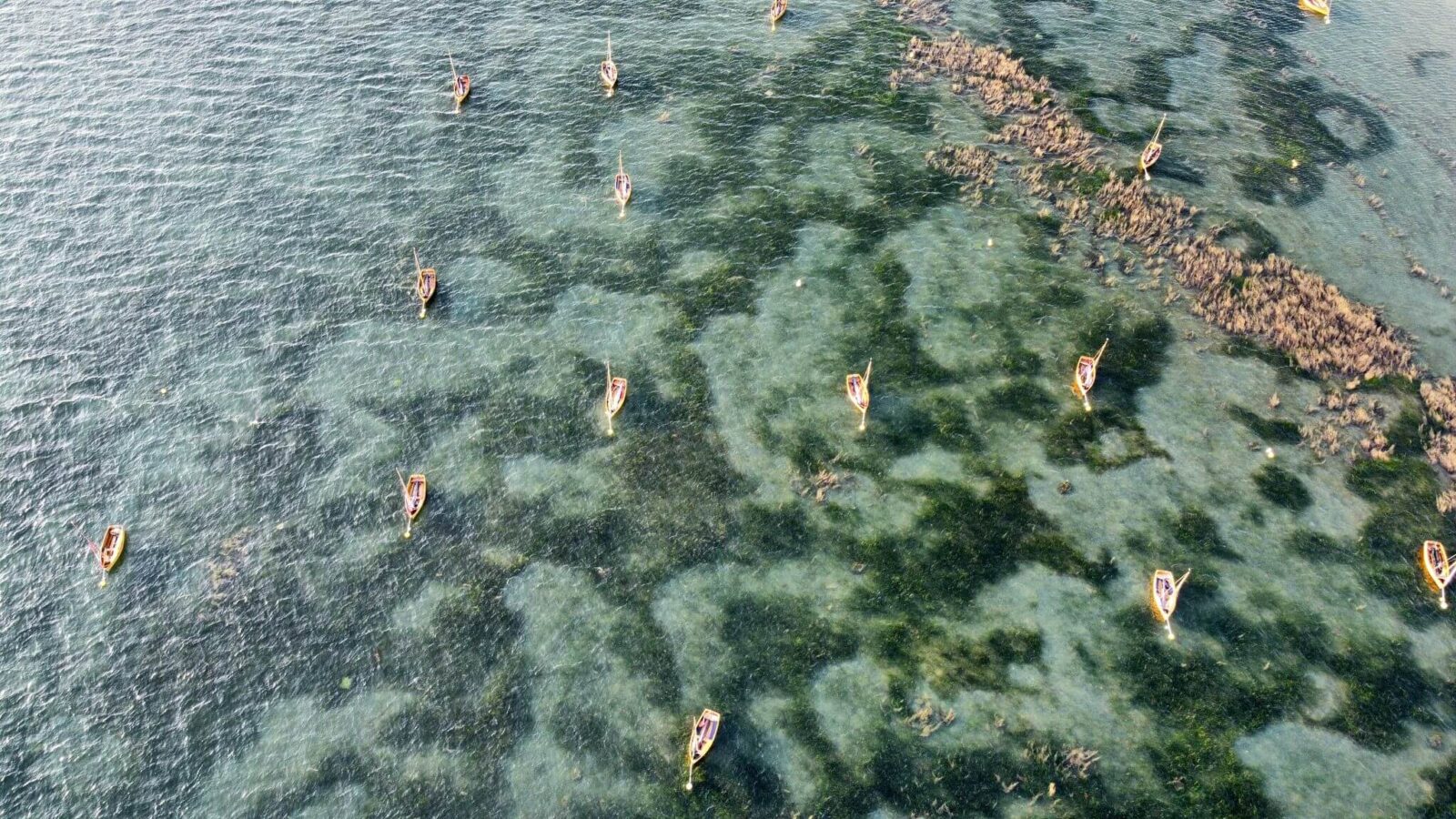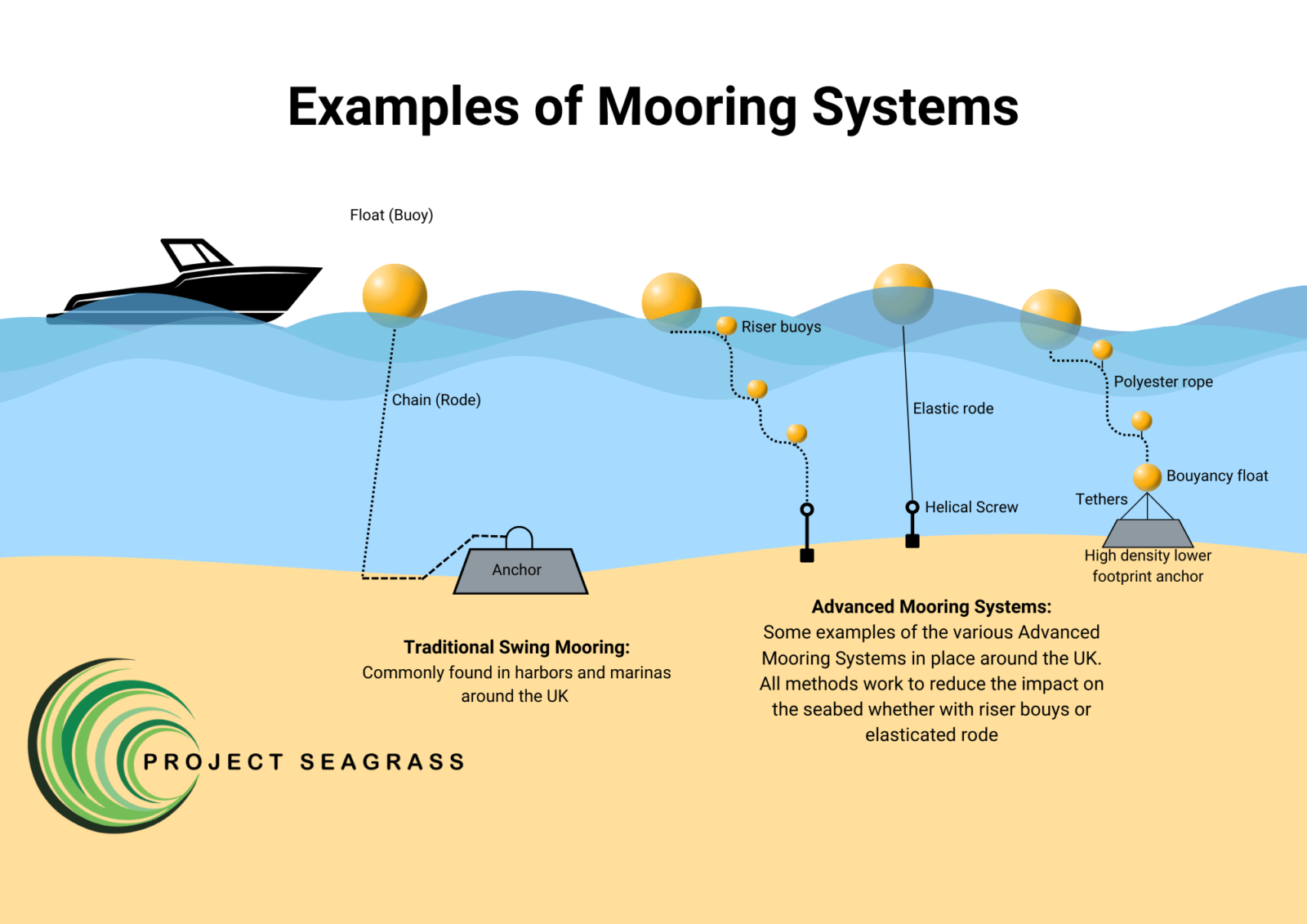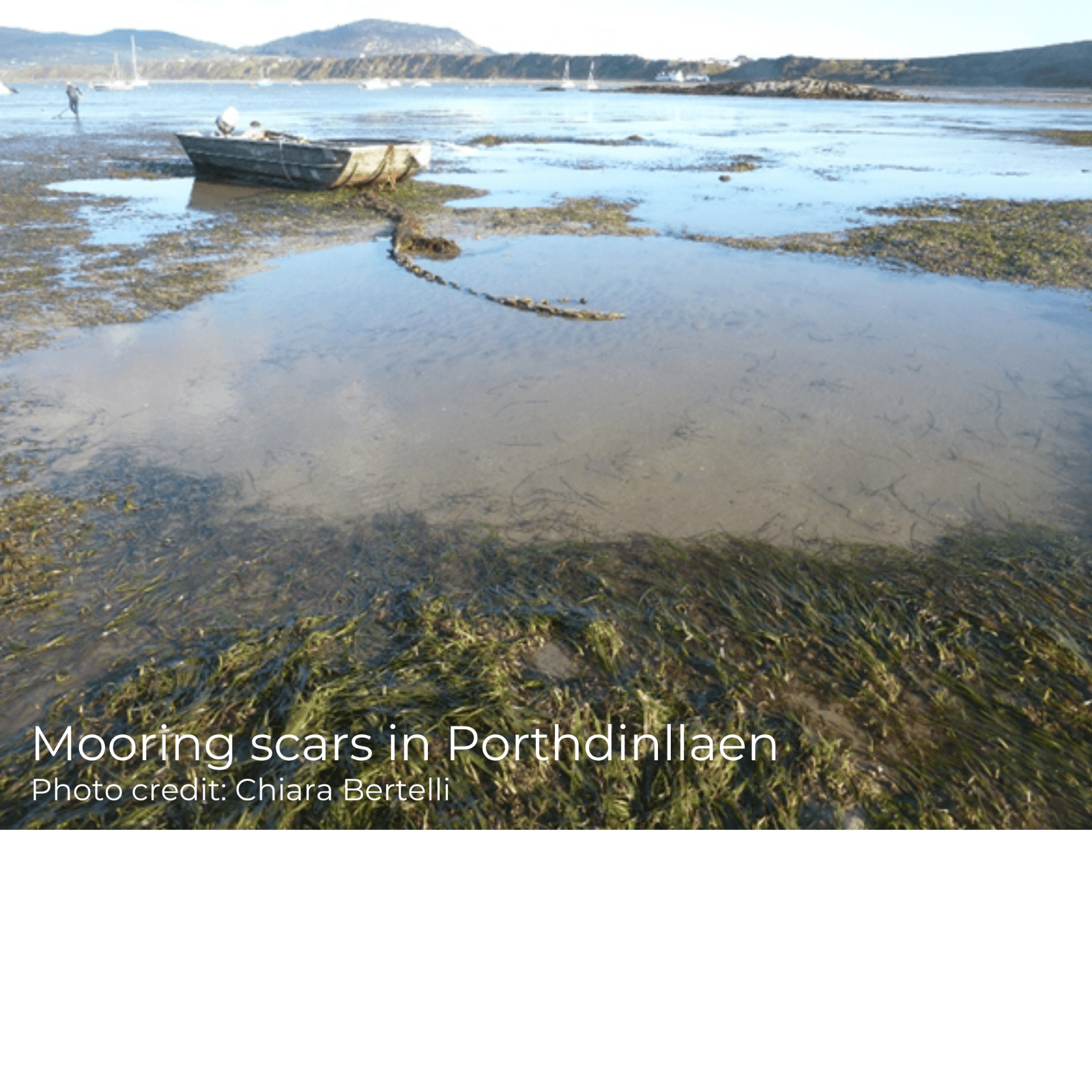Advanced Mooring Systems
A solution to prevent and alleviate physical seabed damage, disturbance, and seagrass scarring caused from traditional anchorage
Advanced Mooring Systems
A solution to prevent and alleviate physical seabed damage, disturbance, and seagrass scarring caused from traditional anchorage
Through our work to protect, restore, and conserve seagrass globally we recognise that conserving our seagrass ecosystems must underpin effective restoration efforts. One way to reduce pressure on these sensitive habitats is to remove the opportunity for physical damage. Physical damage to seagrass habitats comes in a range of forms most notably occurring from recreational boating activities such as anchoring and mooring.
Advanced Mooring Systems (AMS) are a simple solution to prevent and alleviate physical seabed damage, disturbance, and seagrass scarring caused from traditional anchorage. AMS are being trialled globally and supported across a large number of organisations within the conservation and recreational industries.



UAV imagery depicting mooring scars within seagrass meadow at Seaview, Isle of Wight. Photo Credit: Anouska Mendzil
Traditional Moorings vs Advanced Mooring Systems
Traditional Moorings
In locations such as harbours and marinas traditional swing moorings are often used. These moorings are comprised of an anchor block and buoy attached by a chain (rode).
The mooring anchor has been designed to be effective at a range of tidal states. As the tide falls the static anchor block remains in place, but the chain lies across the seabed and is pulled in the direction of the prevailing tide or wind, scouring the seabed. This can leave scars within a seagrass meadow, leading to isolated and fragmented habitats, reducing habitat functionality.
Seagrass meadows exist in sheltered areas and can often be found in waters with large amounts of boating traffic and activity such as harbours, marinas, and lagoons. However, we know that seagrass can co-exist with a thriving marine economy. For example, seagrass can be found in and around Cowes Harbour in The Solent.
Advanced Mooring Systems (AMS)
To minimise the impacts of traditional mooring systems, AMS have been developed. AMS work to minimise contact with the seabed. The two points of contact in a traditional mooring include the anchor and its chain. Some AMS designs work to minimise the footprint of the anchor point via a helical screw that drills into the seabed.
Additional features of AMS include the suspension of the chain; either via an elastic system that allows for the changing tidal levels, or, by suspending the chain with riser buoys.

UK AMS Projects
Project Seagrass work with a number of organisations trialling AMS systems around the UK
Isle of Wight
Visitor moorings, Priory Bay, Isle of Wight
In collaboration with Blue Parameters and Warren Boats, two Mermaid K systems are currently being installed on a trial basis at Seaview funded by Seacology. We recognise that it is important that we undertake extensive monitoring of the marine habitat including the seagrass meadows in which the moorings are located to ascertain any changes on the marine environment
Visitor moorings, Priory Bay, Isle of Wight
We aim to install three AMS visitor boat moorings of the Mermaid K design at Priory Bay on the Isle of Wight. This will protect our newly planted seagrass active restoration sites on the Isle of Wight and allow them to have time to germinate, grow and thrive with as little disturbance as possible.


Porthdinllaen, North Wales
Visitor moorings, Porthdinllaen
Porthdinllaen moorings are managed by the National Trust, and are Advanced Mooring Systems Safemoor and Seaflex.
The moorings have been supported by the Natur am Byth! Project, with the mooring section of the project being led by Pen Llyn a’r Sarnau Special Area of Conservation.
There are several AMS moorings installed within Porthdinllaen by the National Trust, to protect the extensive seagrass meadow here.
Regular monitoring of these moorings are undertaken, and there are plans for more to be installed.
Project Seagrass supported the Natur am Byth! project by writing two reports to aid the development:
- Advanced Mooring Systems (AMS): Investigation of suitable sites and techniques
- Monitoring: Review of Seagrass Health Monitoring
Dale
Visitor moorings, Dale Bay, Pembrokeshire
In Pembrokeshire, we assisted with the installation of visitor moorings in Dale Bay, alongside our restoration project here.
These are traditional moorings, however are located outside of the restoration area to discourage anchoring within the restoration area and damaging the seagrass growing. Dale Seagrass Stakeholder Group is instrumental in managing the moorings, and visitors are encouraged to donate when using the moorings – find out more here

Seagrass Safe Sailor
To reduce and minimise unnecessary damage to the already sensitive and fragile seagrass environment there are a number of ways that recreational and commercial boat users can help us and become a Seagrass Safe Sailor:
Effective Seagrass Mapping
With recreational boating activities happening around the length of the UK there will be times that mooring systems (AMS or otherwise) will not be available. It is times like this the effective and continued mapping of our seagrass ecosystems needs to be shared publicly to support positive environmentally guided decisions. To locate seagrass meadows quickly and easily within the UK and overseas whilst passage planning, our SeagrassSpotter app and website is available. Knowing where seagrass is can help to guide decisions when anchoring.
Visit SeagrassSpotter website or download the app on the App Store or Google Play Store
Anchoring with Care
There will be occasions when AMS isn’t available and anchoring is necessary. This is why we are working collaboratively with The Green Blue and RYA to promote their Green Guide to Anchoring and Moorings. This guide includes best practices for anchoring and how to avoid further damage to sensitive marine habitats.
Click here for more sustainable boating advice, information and resources.
If anchoring does place within seagrass, and this information was not included on SeagrassSpotter, take a photo of your anchor in seagrass from the boat (if safe to do so) and upload with the location anchored to highlight the location. This information is useful for other boat users and a new seagrass meadow may have been identified.
There are other ways that boaters can help to reduce their impact on seagrass and other sensitive marine habitats. These includes things such as using a drip tray when re-fuelling, choosing less damaging antifouls, and disposing of blackwater and sewage safely. Please see The Green Blue for more information and guides.
We support The Green Blue sustainable anchoring initiatives – Take the Pledge and join the sustainable boating community!



